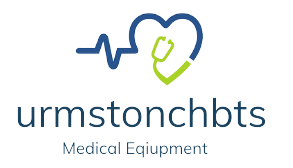When it comes to relaxation and rejuvenation, massages have long been hailed as a therapeutic escape from the hustle and bustle of modern life. Among the various massage techniques, deep tissue massage stands out for its unique approach to targeting deeper layers of muscles and connective tissues. In this article, we’ll delve into the world of deep tissue massages, exploring its benefits, techniques, and considerations.
Understanding Deep Tissue Massage
What is Deep Tissue Massage?
Deep tissue massage is a specialized massage technique that focuses on accessing the deeper layers of muscles, tendons, and fascia. Unlike more gentle relaxation massages, deep tissue massage employs firm pressure and slow strokes to alleviate chronic muscle tension and knots.
Benefits of Deep Tissue Massage
- Pain Relief and Muscle Tension Reduction
Deep tissues massage is highly effective in targeting chronic pain, such as lower back pain, neck stiffness, and sore shoulders. By reaching deep muscle layers, it can release tension and ease discomfort. - Improved Blood Circulation
The focused pressure of deep tissue massages promotes better blood flow, which can aid in the body’s natural healing process and enhance overall circulation. - Injury Rehabilitation
Athletes and individuals recovering from injuries often benefit from deep tissues massage. It can break down scar tissue, improve flexibility, and hasten the healing of strained muscles. - Stress and Anxiety Reduction
The therapeutic nature of deep tissues massage can trigger the release of oxytocin and serotonin, helping to alleviate stress, anxiety, and even depression.
The Techniques Behind Deep Tissue Massage
Targeted Pressure and Friction
Deep tissue massages involves applying intense pressure and friction against muscle grain. This pressure helps break down adhesions (knots) and release tension, allowing muscles to relax.
Stripping
Massage therapists use their fingers, thumbs, or even elbows to apply deep, gliding strokes along the length of muscles. This technique helps lengthen muscle fibers and release tension.
Stretching and Joint Mobilization

Stretching and moving joints during the massage session can enhance flexibility and improve range of motion. This is particularly beneficial for individuals with limited mobility.
Cross-Fiber Friction
This technique involves using fingers or thumbs to apply pressure across the grain of muscles. It’s effective for breaking down scar tissue and improving circulation.
Considerations Before Getting a Deep Tissue Massage
- Communicate Openly
Before the massage begins, communicate your specific needs, preferences, and any areas of concern with the therapist. This ensures a tailored and effective session. - Temporary Discomfort
Deep tissues massage might cause temporary discomfort, as the therapist works on knots and tension. However, it should not be excessively painful. Inform your therapist if you experience severe pain. - Hydration and Rest
Drinking water before and after the massage can help flush out toxins released during the session. Additionally, allowing your body time to rest and recover is crucial.
Conclusion
In a world filled with stress and tension, deep tissue massages emerges as a powerful ally in promoting relaxation, pain relief, and overall well-being. By targeting deep-seated muscle tension, this technique offers a holistic approach to achieving physical and mental balance.
FAQs about Deep Tissue Massage
- Is deep tissues massage suitable for everyone?
While deep tissues massages can benefit many individuals, it might not be recommended for those with certain medical conditions. Consult a healthcare professional before scheduling a session. - How often should I get a deep tissues massage?
The frequency of deep tissues massage depends on individual needs. Some people find value in weekly sessions, while others benefit from monthly treatments. - Can deep tissue massage help with posture improvement?
Yes, deep tissues massage can aid in releasing tension in muscles that affect posture. Combined with proper ergonomics and exercises, it can contribute to better posture. - Are there any side effects of deep tissues massage?
Mild soreness or bruising can occur after a deep tissue massage, but it should subside within a day or two. Drinking water and gentle stretching can help alleviate these effects. - Is deep tissues massages similar to Swedish massage?
While both techniques involve manual manipulation of muscles, deep tissues massage focuses on deeper layers of tissue and uses more pressure compared to the gentler strokes of Swedish massage.



